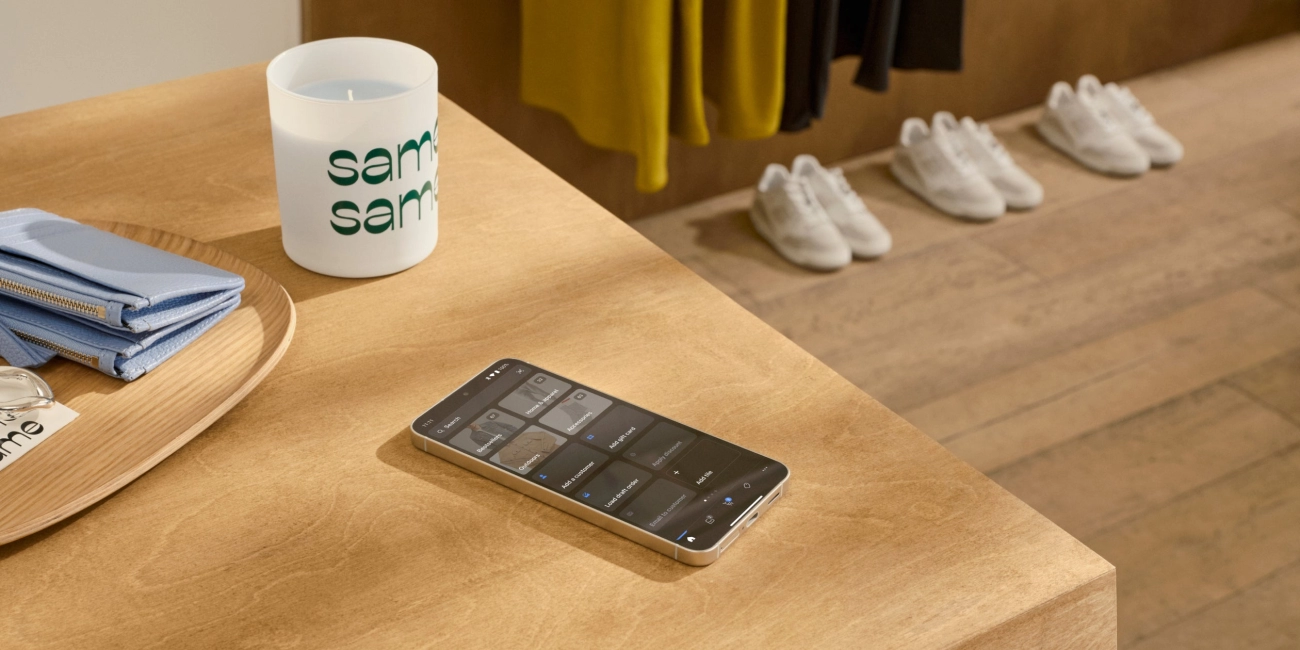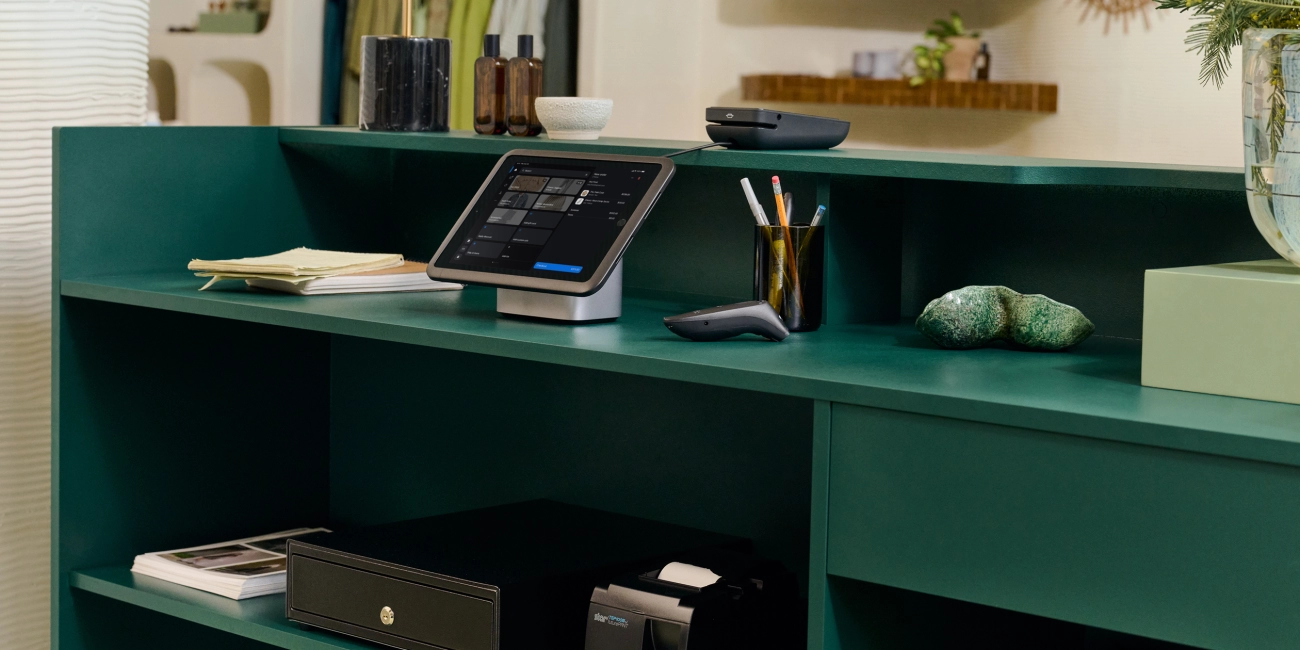Best POS Hardware for Small Business 2025 Affordable Reliable Easy Use

POS Hardware Essentials for Small Business Operations

Running a small business means juggling a lot—from managing inventory to keeping checkout lines smooth. Picking the right POS hardware for small business is key to making daily operations easier and customer experiences better. Here’s a quick breakdown of the essential hardware types and how they fit into small-scale setups.
Key POS Hardware Types and What They Do
| Hardware Type | Purpose | Pros | Cons |
|---|---|---|---|
| Touchscreen Terminals | Central hub for sales, inventory, and payments | Easy to use, all-in-one | Higher upfront cost |
| Mobile Card Readers | Accept payments anywhere, mobile and pop-ups | Portable, under $50 options | Limited features compared to terminals |
| Barcode Scanners | Speed up checkout and manage inventory | Fast, reduces errors | Requires compatible POS software |
| Receipt Printers | Provide physical proof of purchase | Fast printing, reliable | Extra counter space needed |
| Cash Drawers | Secure cash transactions | Secure, simple integration | Less used as cards grow popular |
Compact Options Under 500 Dollars Ideal for Small Business
Many small businesses face tight budgets and limited counter space. Luckily, you can find affordable POS terminals for retail and mobile card readers small business owners love that are:
- Compact and portable — perfect for mobile vendors, cafes, or retail stores with limited space.
- Cost-effective — many quality options fall well below a $500 budget.
- Easy to set up — plug and play devices get you ready in minutes, no tech expert needed.
For example, a mobile card reader combined with a smartphone or tablet makes a powerful low-cost combo. Your checkout area stays neat, supporting a smooth customer flow without bulky equipment.
Integrating POS Hardware With Software to Avoid Silos
Hardware alone won’t solve all challenges. It’s critical your POS devices sync seamlessly with free or low cost POS software that manages:
- Inventory tracking POS accessories for real-time stock updates
- Automatic sales updates to avoid manual errors
- Unified data across devices to prevent information silos
SDLPOS offers software that pairs easily with hardware like touchscreen terminals and barcode scanners, helping you automate inventory, manage sales, and streamline daily workflows—all without expensive subscriptions or complex setups.
Why This Matters for Your Small Business
By choosing the right mix of hardware that fits your space and budget, and pairing it with integrated software, you’ll:
- Minimize upfront costs without sacrificing key features
- Save valuable counter space with compact, portable devices
- Keep operations in sync, avoiding frustrating paperwork and double entries
This balanced approach empowers you to run your small business smarter, faster, and more efficiently every day.
Top Factors to Consider When Buying POS Hardware for Your Small Business

Choosing the right POS hardware for small business is more than picking the cheapest device. You want a system that fits your budget, works smoothly, grows with you, and keeps payments secure. Here’s what to focus on:
Budget and Return on Investment
- Upfront costs usually range from $100 to $1,000, depending on features and devices like touchscreen terminals, mobile card readers, or barcode scanners.
- Consider ongoing fees as well – transaction fees around 2-3% are typical.
- To calculate ROI, focus on how much faster your checkout gets. Reducing checkout time by 40% can help recoup your investment in about 3 months.
- Look for affordable POS terminals that balance features with price, especially if you’re setting up a small retail or food service spot on a tight budget.
Ease of Use and Setup
- Prioritize plug and play devices that require minimal installation.
- Compatibility with mobile apps is a plus, particularly if you run sales on the go or want quick access to your inventory.
- For local small businesses and solopreneurs, quick onboarding matters – your team or just you should be able to start processing payments immediately.
- Hardware that reflects local habits, like accepting contactless payments or supporting cash drawers, is key.
Scalability and Flexibility
- Start with what you need but plan for growth.
- Good POS hardware should allow you to add tablets or mobile readers for pop-ups or seasonal shops without replacing the entire system.
- Modular setups and cloud-connected devices make scaling smooth and affordable.
Security and Compliance
- Look for EMV chip card readers and PCI DSS-compliant hardware to protect customer data.
- Contactless payment devices reduce fraud risks in busy stores and speed up transactions.
- High-traffic local spots need hardware that supports these standards to keep your business safe and trusted.
Industry Fit and Specialized Features
- Retail businesses benefit from hardware with inventory tracking POS accessories like barcode scanners and integrated cash drawers.
- Food service operations often need order modifiers and easy linking to kitchen printers.
- Service-based businesses should consider hardware that supports appointment linking and clear sales reporting.
- Tailoring your POS hardware to your specific industry ensures smoother operation and better customer experiences.
For more on how to integrate your POS hardware smoothly, check out POS hardware integration for step-by-step details and options.
Choosing wisely now saves headaches and cost later. Focus on budget, ease, security, and fit to set your small business up for success.
Best POS Hardware Recommendations for Small Businesses in 2025
Choosing the right POS hardware can make or break your small business operations. Here’s a curated list of top POS hardware options for 2025, focusing on affordability, scalability, and integration with popular software like SDLPOS.
Entry-Level Mobile Card Readers Under 50 Dollars
Perfect for startups and solopreneurs on a tight budget, these mobile card readers are compact, portable, and easy to use. They support contactless payments, work well with smartphones, and minimize upfront costs.
- Square Reader: The go-to for many small businesses thanks to its simple setup and reliability.
- Affordable, usually under $50.
- Great for pop-ups, markets, and low-volume retail.
- Supports EMV and contactless payments.
Mid-Tier Hybrid Terminals Priced Between 200 and 400 Dollars
For more robust needs, hybrid terminals with built-in barcode scanners and touchscreen interfaces bring faster checkout speeds and better inventory tracking.
- Models include SDLPOS spotlights and similar compact terminals.
- Integrates barcode scanners and receipt printers.
- Typically priced $200-$400 – a solid mid-range investment.
- Ideal for retailers needing compact all-in-one solutions without extra devices.
Premium Small Business POS Systems and Software Bundles
If you’re ready for seamless software integration and scalable hardware, check out the SDLPOS Pro Kit. This premium option delivers advanced features and strong support for growing businesses.
- Includes touchscreen terminals, cash drawer integration, and receipt printers.
- Bundled with SDLPOS software optimized for inventory automation, sales analytics, and omnichannel growth.
- Supports quick expansion by adding tablets and mobile readers.
- Comes with lifetime support and US-based shipping.
Pros and Cons Matrix for Popular POS Hardware
| Hardware | Pros | Cons | Price Range |
|---|---|---|---|
| Square Reader | Ultra portable, easy setup, EMV/contactless support | Limited features for growth | $40 – $50 |
| Mid-tier Hybrid Terminal (e.g., SDLPOS) | All-in-one compact design, barcode scanner included | Heavier upfront cost | $200 – $400 |
| SDLPOS Pro Kit | Seamless software integration, scalable, lifetime support | Premium price | $500+ |
Real User Ratings and Feedback
Insights from Reddit and small business forums show:
- Square Reader is praised for its simplicity and trustworthiness.
- SDLPOS hardware receives strong marks for customer support and lifetime updates.
- Users appreciate how SDLPOS systems reduce checkout time by 30-40% and improve inventory accuracy.
Local Angle for US Small Businesses
- SDLPOS ships fast within the US with options for quick demos to help get local users onboard.
- Hardware complies with EMV and PCI DSS standards, ensuring security for your customers in busy retail or food service environments.
- US-based customer service means faster resolution and tailored help for local business environments.
Picking the right POS hardware depends on your specific needs, budget, and growth plans. These options cover the full spectrum, from affordable mobile readers to premium systems with robust features designed for US small businesses looking to streamline sales and inventory management.
Real World Implementation Setting Up and Optimizing Your POS Hardware
Getting your POS hardware for small business up and running doesn’t have to be complicated. With a solid step-by-step approach, you can move from unboxing to processing your first transaction in under 10 minutes, especially using solutions like the SDLPOS quick start app.
Step by Step Setup Guide
- Unbox and connect your touchscreen terminal or mobile card reader. Most devices plug directly into power and your existing Wi-Fi or Ethernet.
- Download the SDLPOS app, designed for easy onboarding with clear prompts.
- Pair your hardware components — barcode scanner, receipt printer, cash drawer — via Bluetooth or USB.
- Enter your business info and tax details to get inventory and payment processing ready.
- Run a test sale to confirm everything is synced and working smoothly.
This simple flow minimizes technical hurdles for local small businesses, letting you focus on serving customers quickly.
Common Pitfalls and Fixes for Small Business POS Hardware
Even the best hardware can hit snags. Here’s what to watch for and how to fix it:
- Wi-Fi dependency issues – For rural or spotty internet locations, choose POS hardware with offline mode support. SDLPOS lets you process transactions without internet, syncing data when the connection returns.
- Printer jams and paper issues – Use the correct receipt paper size and keep paper rolls stocked.
- Scanner misreads – Clean the barcode scanner lens regularly and position items properly.
- Slow device response – Keep software updated and reboot terminals weekly to avoid memory lags.
Dealing with these common issues swiftly ensures smooth daily operations without losing sales.
Maintenance Tips to Extend POS Hardware Life
Regular maintenance can add years to your POS gear and avoid unexpected downtime:
- Clean touchscreen and scanner surfaces weekly with a lint-free cloth and mild cleaner.
- Keep receipt printers dust-free and use the right paper grade.
- Perform regular software updates via SDLPOS app to fix bugs and improve security.
- Backup your data frequently to cloud or external drives.
- Schedule routine hardware checks to identify worn components early.
Well-maintained POS hardware reduces repair costs and keeps your checkout process fast.
Measuring Success With Your POS Hardware
Use simple KPIs (Key Performance Indicators) to see how well your POS setup improves your business:
- Transaction speed – Measure the average time per sale before and after POS implementation.
- Error reduction – Track mistakes like wrong prices or missed discounts—these should drop.
- Inventory accuracy – Compare physical stock counts with system data for discrepancies.
- Customer satisfaction – Faster checkout means happier shoppers, so monitor feedback and repeat visits.
Free tools like the SDLPOS audit template can help you log and analyze these numbers easily, giving you a clear picture of your POS hardware’s return on investment.
Setting up and optimizing your POS system hardware tailored for small business needs doesn’t have to be a headache. A straightforward setup, regular maintenance, offline capabilities, and ongoing performance tracking will keep your local operation running smoothly for years.
Cost Saving Strategies and Long Term Value from POS Hardware for Small Business
When investing in POS hardware for small business, it’s smart to look beyond the upfront price. The total cost of ownership includes hardware costs, transaction fees, and any ongoing support or software subscriptions. Typically, transaction fees range from 2% to 3% per sale, which can add up quickly for busy retailers or cafes.
Cut Costs with Bundled Deals
One of the best ways to save is through bundle deals like those from SDLPOS. These bundles often include touchscreen terminals, barcode scanners, and receipt printers in one package, slashing costs by up to 20% compared to buying separate parts. Bundles also simplify setup and reduce compatibility issues, cutting down your time spent troubleshooting.
When to Upgrade from Mobile Apps to Full Hardware
Many small businesses start with free or low-cost mobile card readers. While these are affordable and quick to set up, they may lack features critical for growth, like:
- Seamless integration with inventory tracking
- Faster checkout processing
- Better receipt printing options
- Robust cash drawer compatibility
If you notice slow checkout lines or inventory errors becoming a problem, it’s often time to upgrade from mobile apps to full POS hardware. Making the switch can significantly reduce transaction times and improve accuracy, delivering a fast return on investment.
Future Proof Your Business with Cloud Enabled Hardware
The top POS systems now offer cloud connectivity. This means your data syncs automatically across devices and channels, making it easier to manage both in-store and online sales. With cloud-enabled hardware, you can:
- Add new terminals or tablets without restarting from scratch
- Track inventory in real time
- Access sales reports from anywhere
- Adapt quickly to new sales channels
Choosing future-proof hardware sets you up for scalable growth without costly overhauls.
Real Life Impact from SDLPOS Hardware
Take the story of a local boutique using SDLPOS: after switching to a bundled solution, they cut checkout time by 30% and doubled sales within six months. Their new POS hardware improved staff efficiency, inventory accuracy, and customer experience—all key factors driving real growth.
Key takeaways for saving and long-term value:
- Factor in transaction fees as ongoing expenses
- Look for hardware bundles like SDLPOS to save 20% or more
- Know when to move from free mobile apps to full hardware
- Invest in cloud-enabled systems for easy scaling and omnichannel selling
- Real users see faster checkout and higher sales with the right POS setup
Smart investment in POS hardware for small business pays off—not just now, but down the road too.
